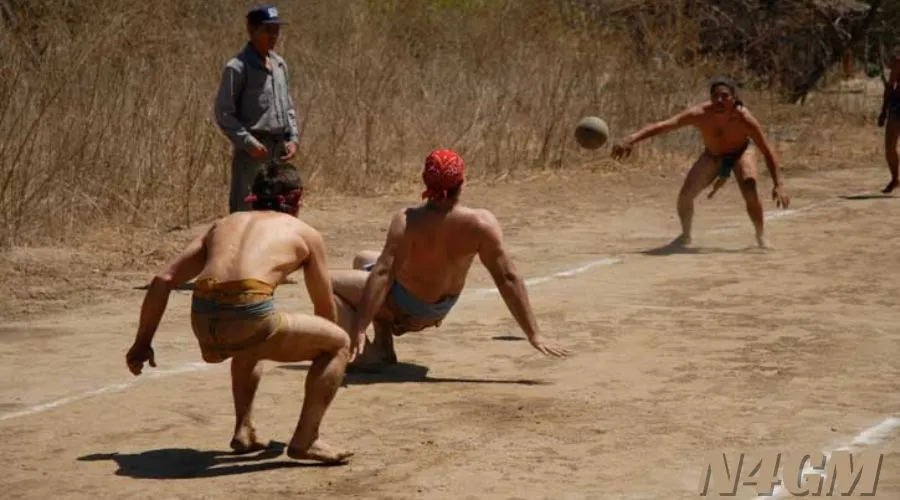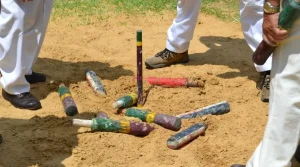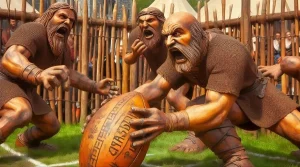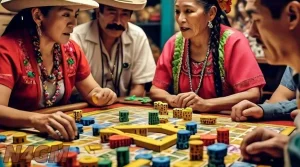Ulama is one of the oldest sports. It dates back to the ancient Mesoamerican sports (ballgame). This game is very important to the indigenous peoples of Mesoamerica, especially the Aztecs and Mayans.
This article will explore this game. We’ll cover its origins, rules, gameplay, and cultural importance. We’ll also discuss its modern resurgence.
Ulama: Ancient Mesoamerican Sports Origins
This is more than 3,500 years old. It is one of the world’s oldest and most enduring sports. The game is based on Mexico’s first culture, the Olmec.
It expanded to other Mesoamerican cultures like the Maya, Zapotecs, and Aztecs. The earliest evidence of the game is rubber balls. They were found at archaeological sites dating to 1600 BCE.
1. Religious And Mythological Significance
It was more than a sport. It had deep ritual and religious meanings in Mesoamerican societies. The game was tied to their religion and mythology. It symbolized cosmic events, like the battle between day and night or life and death.
The Maya, in particular, saw the game as a sacred ritual. They held major ballgames as part of religious ceremonies. In some cases, these events even involved human sacrifices. They reflected the game’s importance in their belief systems.
2. The Ball Game Of The Gods
This ancient Mesoamerican sport is tied to the Mesoamerican ballgame, “Ōllamaliztli,” by the Aztecs. According to Mesoamerican mythology, the gods played ballgames in the underworld. It was a symbol of the conflict between life and death, good and evil.
Ancient monarchs frequently utilized the game to demonstrate their authority and connect with the gods. These games could have life-threatening consequences. They highlighted the game’s significance in Mesoamerican politics and spirituality.
3. Evolution And Survival Of The Game
This Mesoamerican ballgame evolved and spread to different regions over time. This led to various cultural adaptations. Civilizations like the Maya, Zapotecs, and Aztecs had their own versions of the ballgame. The Spanish Conquest in the 16th century nearly ended the game.
The Spanish colonizers banned it for its links to indigenous religions. Despite this, some communities in Mexico kept the tradition of this game. It’s still played today in a modern version of the game in Sinaloa.
Rules And Gameplay
This game is a traditional Mesoamerican ball game. It has deep cultural roots and a unique style of play. It has evolved over centuries and is played in various forms.
- Ulama de Cadera (Hip Ulama)
- Ulama de Antebrazo (Forearm Ulama)
- Ulama de Palo (Wooden Paddle)
1. Hip Ulama
Team Composition:
- Players: Each team consists of five to twelve players.
- Attire: Players wear loincloths and leather hip pads. They protect against the heavy rubber ball.
The Playing Field:
- Court Size: The game is played on a rectangular court, a tastei. It is about 225 feet long and 13 feet wide.
- Center Line: The court is divided by a center line known as the analco, with end lines called chichis.
The Objective Of The Game:
- The goal is to score by getting the ball past the other team’s end line using only the hips. Keep the ball in play.
Starting The Game:
- Serve Types: The game begins with a serve, which can be either a high throw (male arriba) or a low roll (male abajo).
Gameplay Mechanics:
- Ball Handling: Players can only strike the ball with their hips. Touching the ball with any other body part results in a penalty.
- Returning the Ball: Players must keep the ball in play and within court boundaries. Failure to do so results in points for the opposing team.
Scoring System:
- Points: Points, known as rayas, are scored when:
- The opposing team fails to return the ball past the analco.
- The ball goes out of bounds.
- A player touches the ball with any body part other than the hip.
- Winning: The first team to score eight points wins. If both teams have the same score after a round, the scores reset to zero.
Phases Of The Game:
- The game has three phases, called urrias. Players can lose all their points during these phases.
Equipment Used:
- Ball: The ball weighs between 7 and 9 pounds (3 to 4 kg) and is made from rubber.
- Protective Gear: Players wear leather hip pads for safety.
2. Forearm Ulama
Team Composition:
- Players: Teams consist of 1 to 3 players.
- Attire: Players typically wear comfortable clothing suitable for physical activity. Protective gear is less common compared to the hip ulama.
The Playing Field:
- Court Size: It is played on a smaller court compared to the last one. The size can vary. But, it is usually compact enough for the fewer players.
- Boundaries: The court is marked with thick lines drawn in the dirt, like other forms. It is divided by a center line called the analco.
The objective Of The Game:
- The main goal is to score points. To do this, keep the ball in play and get it past the opposing team’s end line. Use only your forearms.
Starting The Game:
- Serve: The game begins with a serve, which is typically a roll of the ball toward the opposing team. The serving team is usually the one that scored last.
Gameplay Mechanics:
- Ball Handling: Players must return the ball using their forearms. Touching the ball with any other part of the body results in a penalty.
- Returning the Ball: Players must keep the ball in play and within the court boundaries. If the ball goes out of bounds or fails to cross the center line, the opposing team earns a point.
Scoring System:
- Points: Points, known as rayas, are scored when:
- The opposing team fails to return the ball past the analco.
- The ball is knocked out of bounds.
- A player touches the ball with any body part other than the forearm.
- Winning: The first team to score eight points wins the game. If both teams have the same score after a round, the scores reset to zero.
3. Wooden Paddle
Team Composition:
- Players: Teams typically consist of 3 to 4 players.
- Equipment: Players use a heavy (6–7 kg or 13–15 lb) two-handed wooden paddle to strike a 500g (1 lb) ball.
The Playing Field:
- Court Size: It is played on a smaller court compared to the hip.
- Boundaries: A center line, called the analco, divides the court in half. The end lines are known as chichis.
The objective Of The Game:
- The main goal is to score points by hitting the ball past the opposing team’s end line using a wooden paddle.
Starting The Game:
- Serve: The game begins with a serve, which can be either a high throw (male arriba) or a roll across the court (male abajo).
Gameplay Mechanics:
- Ball Handling: Players use the wooden paddle to strike the ball. The paddle must make contact with the ball to keep it in play.
- Returning the Ball: Players must return the ball within the court boundaries. Failure to do so results in points for the opposing team.
Scoring System:
- Points: Points, known as rayas, are scored when:
- The opposing team fails to return the ball past the analco.
- The ball goes out of bounds.
- Winning: The first team to score eight points wins the match. If both teams have the same score after a round, the scores reset to zero.
The Legacy And Revival
- Historical Significance: It is one of the oldest team sports. It dates back over 3,500 years in Mesoamerica.
- Cultural importance: The game was tied to rituals and agricultural cycles. It also helped resolve conflicts. It often had high stakes for players.
- Decline: After the Spanish conquest, bans on the game followed. It was deemed too religious. This caused a sharp decline in its practice.
- Extinction: By the early 21st century, it was at risk of vanishing. Only a few Sinaloa communities still played it.
- Role of the Lizarraga Family: They revived the game by training new players and promoting it. They exported it to cultural centers like Xcaret.
- Modern Revival: This game is resurging, especially in indigenous areas of Mexico and urban centers like Mexico City, where new courts have been built.
- Inclusivity: The revival has drawn more women to the sport. They now embrace its cultural significance.
- Cultural Ceremonies: Before matches, players today perform rituals. They embody mythological deities and celebrate the game’s history.
- Community Engagement: The revival of the sport fosters pride and identity. Tournaments and exhibitions are organized to promote the sport.
- Future Challenges: This has revived, but it still faces challenges. It must preserve the game and keep it relevant for future generations.
Conclusion
This ancient Mesoamerican ballgame has a rich history spanning over 3,500 years. The game nearly went extinct. But, in recent decades, it has revived thanks to dedicated communities and individuals. As it grows in popularity, it links to ancestral traditions.
It also celebrates cultural heritage for future generations. The game’s unique rules, gameplay, and cultural significance are fascinating. They are a part of Mesoamerican history, now being preserved for posterity.







